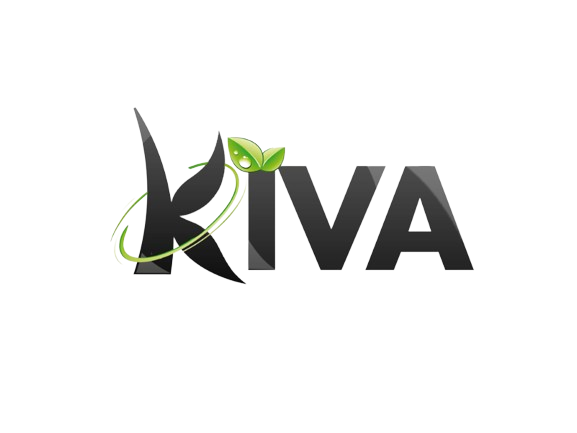The United States of America, the world’s largest economy, has long been a land of opportunity for individuals from around the world who aspire to live and work in the country. Individuals aspiring to come to the country for employment purposes have a number of different visa options to choose from. This type of visa is majorly called the ‘work visa’, and it is of various types. Each type of USA work visa is designed to meet certain needs and qualifications, and each has its own specific requirement.
In this blog post, we will go through the most common types of work visas available in the USA
Types of USA Work Visa
There are different types of work visas available in the USA, but they are classified into four groups:
- Temporary Nonimmigrant Visa
- Permanent (Immigrant) Worker visa
- Student and Exchange visitor’s visa
- Temporary Business Visit Visa
1) The Temporary Non-Immigrant Visa
The Temporary Non-Immigrant work visa is the type of visa available for people who are looking to work in the United States for a period of time. Most times, an employer submits a petition for this type of work visa to the United States Citizenship and Immigration Services (USCIS) on behalf of the potential employee. Prior to coming to the US, the employee must also apply for a visa. There are many categories of workers that fit into this type of visa. Below are the most common types of temporary non-immigrant USA work visas:
H Visas
The H visas are the most common types of USA work visas and they include the H-1B, H-2A, H-2B, and H-3 visas. The H-1B visa is designed for skilled workers in a specified profession or occupation. It is also for those who are specified in an academic field or experts in a field with college degrees or higher or equivalent work experience. The H-1B visa requires sponsorship from a US-based employer and is usually issued for a maximum of six years. To be eligible for this type of H visa, the employer must prove to the USCIS that there is a lack of qualified US applicants for the job. The applicant must also provide a proof of bachelor’s degree or its equivalent in the field.
Other types of H visas are the H-2A and H-2B visas. These Visas are for temporary workers in the agricultural or non-agricultural setting and do not extend beyond 12 months.
The last type of H visa is the H-3 visa, which is for those seeking trading in any field, except medical training or training to meet the needs of those who need special education. The H-3 visa is for individuals who want to train within the USA but will be pursuing their careers in another country.
L -Visas
The L-Visas are needed for intra-company transfers i.e. transferring within a company at which they are currently working from their foreign office to the USA. However, this type of visa is available to executives, managers (L-1A visa), and special employees (L-1B). The L-1A visa is meant for those working at the administrative level and it comes with a three-year duration. An L-1B visa is meant for the specialized employees and it comes with a year duration.
O-Visas
O visas or O-1 Visas are designed for individuals with exceptional with extraordinary abilities in fields such as education, or business The O-1 visa can be granted a visa extension over 3 years.
I-Visas
I-Visas are eligible for members of the foreign press including reporters, editors, filmmakers, etc when the outlet has a home office in a foreign country. The visa is valid as long as the holder is still engaged in this profession in the same country.
P Visas
P Visas are for individuals who excel in performance, athletics, or artistic professions and those who accompany them. The visa usually is event-based i.e. they expire once the holder is done with the event he/she purposely came for.
TN Visas
This type of USA work visa is specific to citizens of Canada and Mexico under NAFTA. It enables professionals from these two countries to work at certain professional level in the USA.
Permanent (Immigrant) Workers’ Visa
This is the category of visa meant for people with the right job skills. They can be used to obtain permanent residence in the US through the combination of education, eligibility, skill set, and expertise. There are five types of permanent workers’ visas:
· EB-1 (First Preference)
EB-1 visa is specific for individuals with extraordinary abilities such as business professionals, academics and researchers, arts or athletics, and scientists. This type of USA work visa does not require labor certification.
· EB-2 (Second Preference)
EB-2 visas are intended for professionals that have an advanced degree or foreign expertise in the field. Individuals who can prove at least ten years of experience in a field or those whose employment is in the interest of the US. This type of permanent worker visa needs a labor certification to be submitted on behalf of the employee.
· EB-3 (Third Preference)
EB-3 visas are specific to individuals holding a bachelor’s degree, as well as skilled and unskilled laborers with offers of employment from a US-based employer. This work visa type also requires a labor certification to be obtained.
· EB-4 (Fourth Preference)
This type of visa is a special category of visa designed for certain religious workers, employees of US foreign service posts, retired employees of international organizations, and non-citizens who are wards of courts in the US. This type of visa does not require a labor certification.
· EB-5 (Fifth Preference)
EB-5 visas are available to individuals who want to make an investment of 1.9 million USD in new companies that employ the service of 10 full-time US workers. This type of visa does not also require a labor certification, and the investors and their families can apply for green cards.
Student and Exchange Visitors’ work visa
This category of visa is specific to three types of students: vocational students, academic starters, and those in education or cultural programs. Common visas under the Student and Exchange Visitors visa include:
· F-Visas
F-Visas are intended for academic students at accredited academic institutions. The students are not allowed to work as the course of study is strictly maintained. Students with F-1 visas can engage in one of the following three enjoyments outside the campus:
- Curricular Practical Training (CPT)
- Optional Practical Training (OPT)
- Science, Technology, Engineering, and Mathematics (METS)
· M Visas
M visas are mainly designed for students at vocational institutions or other recognized institutions, other than language training programs. This type of visa is available for the family of the student.
· J Visas
J Visas are specific to those involved in work-and-study programs like camp counselors, interns, trainees, etc. The programs must, however, promote cultural exchange. Applicants must endeavor to satisfy all the eligibility requirements which include proficiency in English Language.
Temporary Business Visit Work Visa
This category of visas is meant for short-termed business purposes and they are of three types:
· B-1 Visas
B-1 visas are designed for those conducting short-termed business in the US. This type of visa demands a particular period of time to be indicated in the application. This type of visa is usually issued for a one to six months period. The visa can also be extended by an additional six months.
· GB Temporary Visitor to Guam
This type of visa covers the US territories for Guam and the northern part of the Mariana Islands. Holders of his visa need to travel with a return ticket, and they cannot stay beyond 4 days.
Conclusion
The United States of America offers a wide range of work visas to accommodate the different needs and qualifications of people seeking employment opportunities in the country. Whether you are a skilled or trained professional in whatever field, there is always a type of USA work visa that may be suitable for you. You should, however, take note of the requirements, limitations, and application procedures as each visa can be significantly different.




Leave a Reply